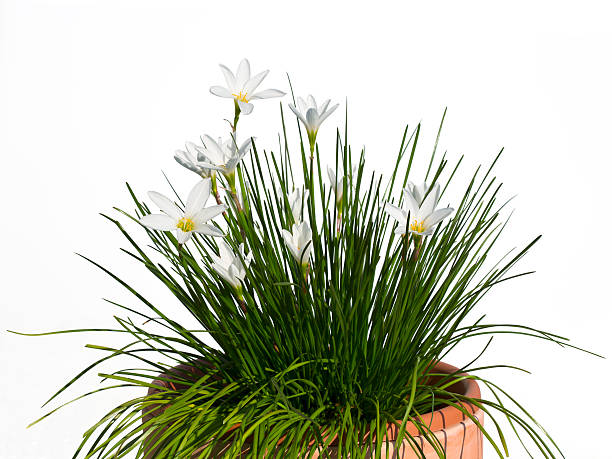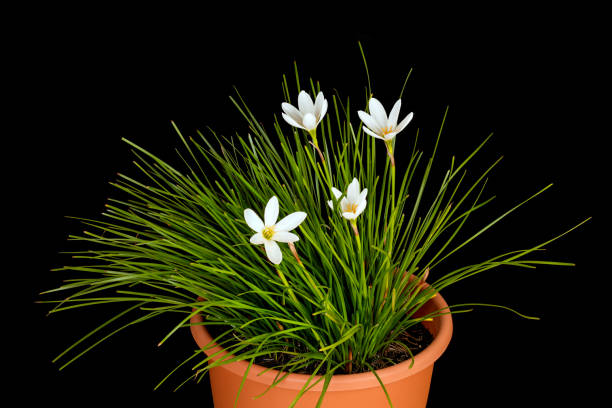Plantsden
rain lilly in 4inch pot
rain lilly in 4inch pot
Couldn't load pickup availability
🌿 Plant Care Guide
- 💡 Light: Bright sunlight for 4–6 hours daily
- 💧 Water: Regular; keep soil evenly moist
- 🌱 Soil: Fertile, well-draining potting mix
- 🌡️ Temperature: 18°C – 32°C
- 💨 Humidity: Moderate
- 🪴 Care Level: Moderate maintenance


Care Instructions
Care Instructions
Indirect sunlight, water twice a week
Product Description
Product Description
Rain lilies, botanically classified under the genus Zephyranthes, are charming and petite perennial plants known for their dainty, lily-like flowers and their tendency to bloom shortly after a rainfall. These plants belong to the Amaryllidaceae family and are native to the Americas. Here's a description of rain lilies:
Appearance:
-
Leaves: Rain lilies typically produce slender, grass-like leaves that emerge from the base of the plant. The leaves are usually green and may be flat or slightly arching. They grow in clumps and provide a simple and unobtrusive backdrop to the vibrant flowers.
-
Flowers: The most distinctive feature of rain lilies is their delightful and often fragrant flowers. These flowers come in a variety of colors, including white, pink, yellow, and lavender, depending on the species or variety. The flowers are typically trumpet-shaped and have six petal-like segments that radiate from the center. Rain lily flowers are relatively small, usually 1 to 2 inches in diameter.
Habitat and Growing Conditions:
-
Light: Rain lilies thrive in full sun to partial shade. They require ample sunlight to produce flowers and can tolerate some shade, especially in hot climates.
-
Temperature: Rain lilies are adaptable and can tolerate a range of temperatures. They are well-suited for warm and tropical regions but can also grow in temperate climates. Some species are cold-hardy and can survive light frost.
-
Watering: These plants are known for their propensity to bloom shortly after a rainfall, hence the common name "rain lily." They appreciate regular watering during the growing season but should be allowed to dry out between waterings. Avoid overwatering, as it can lead to root rot.
-
Soil: Rain lilies prefer well-draining soil, as they dislike standing water. Sandy or loamy soils are ideal for these plants.
Aesthetic Appeal: Rain lilies are valued for their dainty and charming appearance. Their small, trumpet-shaped flowers appear suddenly after rainfall events, creating a magical and ephemeral display in gardens and landscapes. They are often used as border plants, in rock gardens, or as container specimens.
Maintenance:
- Deadhead (remove spent flowers) to encourage continuous blooming.
- Rain lilies can be propagated by division, bulbs, or seeds.
- They are relatively low-maintenance plants and don't require extensive care.
In summary, rain lilies are beloved for their petite and charming flowers, which appear shortly after rain showers, adding a touch of enchantment to gardens and landscapes. With their adaptability and simple care requirements, they make delightful additions to outdoor spaces, especially for those who appreciate the beauty of nature's surprises.


Why Choose PlantsDen?

Healthy & Fresh Plants
We provide well-nurtured plants ready to brighten your space.

Eco-Friendly Packaging
All plants are packed using recyclable, eco-safe materials.

Carefully Selected Varieties
We handpick unique and vibrant plants to enhance your home or garden.
What Our Plant Lovers Say 🌿
"My Fern arrived healthy and beautiful! Loved the packaging!"
- Aisha K.
"Excellent quality plants and super helpful care tips."
- Rohan M.
"Beautifully packed and delivered fresh — highly recommend!"
- Neha S.
"This is my third order — and they never disappoint!"
- Arjun P.
"The plants bring such a fresh vibe to my balcony!"
- Simran L.
"great product a must buy"



